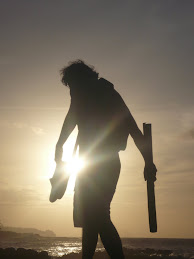Bad weather and flooded roads mean that 9 or so of ADRA Staff flying in from UB to attend PDC arrive at Tosontsengel hasha at 4am this morning.
Nerves, adrenaline and snoring mean a fitful night’s sleep in the Instructors’ ger… Bek informs us very diplomatically this morning that he is moving out to room with non-snorers!
Breakfast this morning is thickly sliced salami on raisin bread with Tsu Te Tse Milk Tea of course, 19 students, 2 translators, 2 instructors, 1 filmcrew and 4 cooks crammed into a 12m sq lunchroom – great way to get to know your classmates!
Class starts just after 9am in a Russian Army-green circus-looking tent, with an introduction to Permaculture, taught simply and eloquently by Rick telling a story through our translators [Bek and Michael] of his travels… here is a condensed version:
“I have worked around the world in Mexico, Central & South America, North & South Africa, India, Indonesia, Israel & The Gaza Strip, and Australia …and everywhere I go, the weather is changing.
Permaculture is a design framework to create sustainable designs. Permaculturists know a little about a lot of things. We are constantly taking information and putting it into this framework to create sustainable designs.
All information, all skills and knowledge are of value. Any piece of information can be important to sustainable design.
Systems that have worked for thousands of years are no longer working. Some people are waiting for the weather to change back to the way it was.
Smart people are recognizing that it is time for change…”
-Rick Coleman-
Throw in a story about how a small piece of information gleaned from a book he read about Troutfishing in America transferred to a design used in Kenya to capture and control water in an erosion gully to create fertile zones to crop in, plus a brief opening ceremony presided over by the Governor of Tosontsengel, and you get the gist of the opening session.
Lunch is Offal [cue comic relief snare drum here] …broth made from simmering the organs of a sheep this morning, with rice, potatoes, carrots and turnips in the mix.
The temperature drops as we walk back to the classroom tent for the first afternoon session, and before you know it the wind is howling and we are being pelted with hailstones. A couple tent pegs are pulled out of the sandy ground and the whole classroom threatens to blow away like a giant Russian Parachute… Everyone grabs hold of a tent pole while the whole thing flaps angrily around us.
10km/h more wind and Mongolia might have seen its first flying circus act, twenty Mongolians and three mad Aussie permies hanging on to a giant green kite soaring across the Steppe…
Nothing like a bit of life-threatening mayhem to kick-start some group bonding.
But class must go on, group shivering in the tent as the hail subsides, it is somehow comforting to us that even the Mongolians are feeling this cold. Then, as quickly as the squall blew in, the clouds part and the sun shines just in time for the last session of the day: Observation Walk and Reading the Landscape.
Timing could not be better; the best time to do observe and read a landscape is just after a rainfall because you can see how and where water flows across the land.
 EROSION GULLY LEADING INTO EAST WALL OF HASHA;
EROSION GULLY LEADING INTO EAST WALL OF HASHA;WATER POURED UNDER THE FENCE AND FLOODED EAST POTATO FIELDS,
CAUSING DAMAGE TO ONE OF THE LARGER CROPPING PLOTS.
A CO-OPERATIVE MEMBER CAN BE SEEN WALKING AROUND THE PUDDLE
TO HELP DIG A TRENCH AND MOUND TO BLOCK WATER FLOW.
The torrential river that cut through our camp during the last rainfall has been diverted by a hand-dug mound and trench barrier protecting the compound entrance, but this sends the water to the east end of the property, ripping through one of the potato fields and giving us a live example of another Mollissonism:
“Everything works both ways.”
-Bill Mollisson-
The precious water which feeds our crops can also destroy them when not harnessed properly.
Rick explains how water moving this quickly will wash away the nutrient in the soil and become a destructive force; though when slowed and allowed to seep in it becomes a creative force in which our crops will thrive… a poignant and very relevant case study.
Classic moment of the day just happened as I sit here typing the daily log:
One of the ladies on ADRA Staff walked in and asked “Cake Class?” Apparently they have heard of SCPI’s Course Kitchen Creations even here…



No comments:
Post a Comment